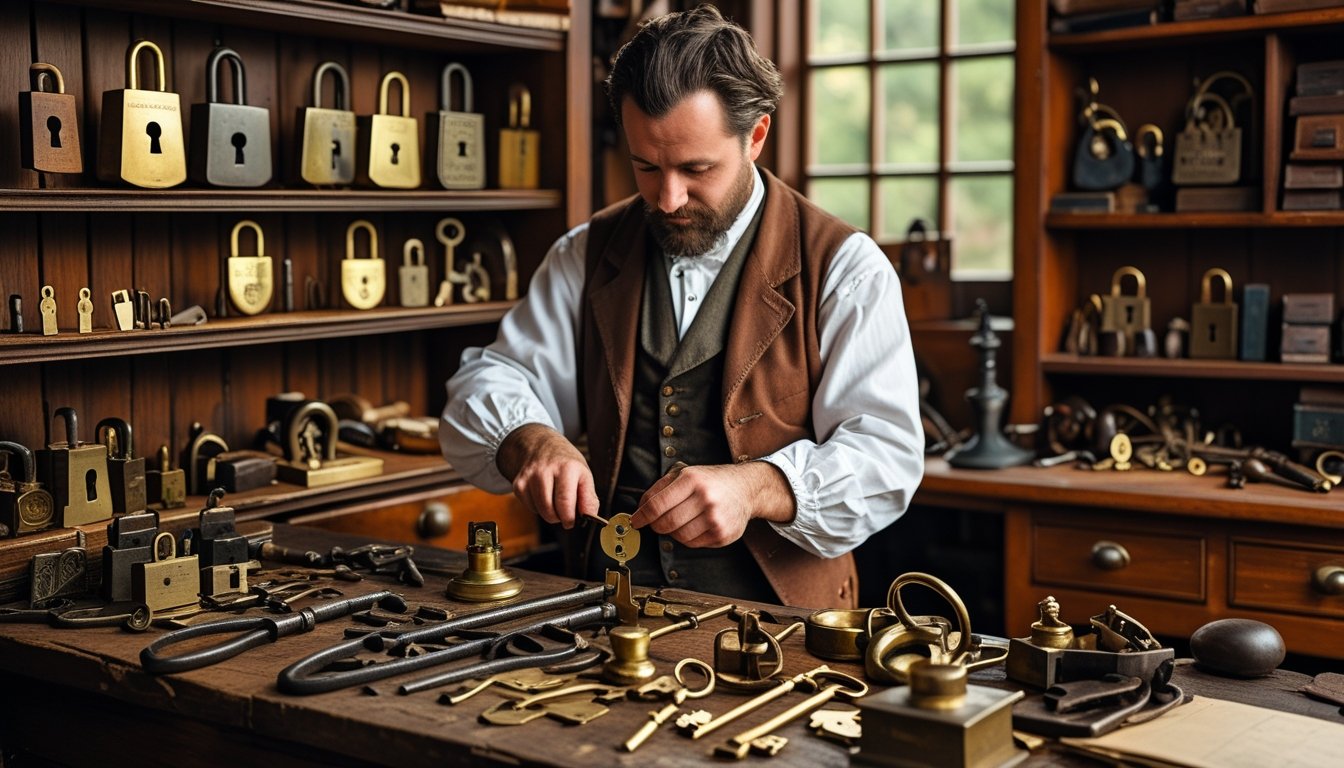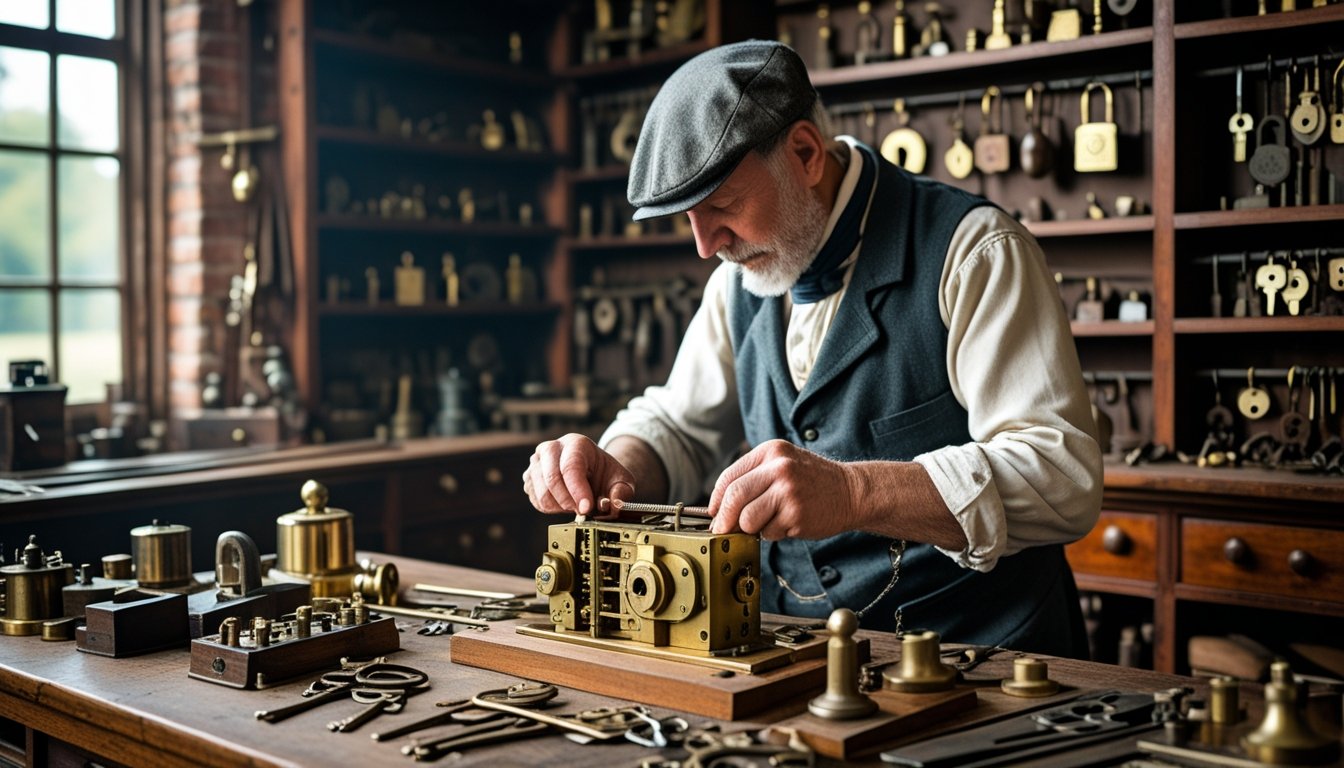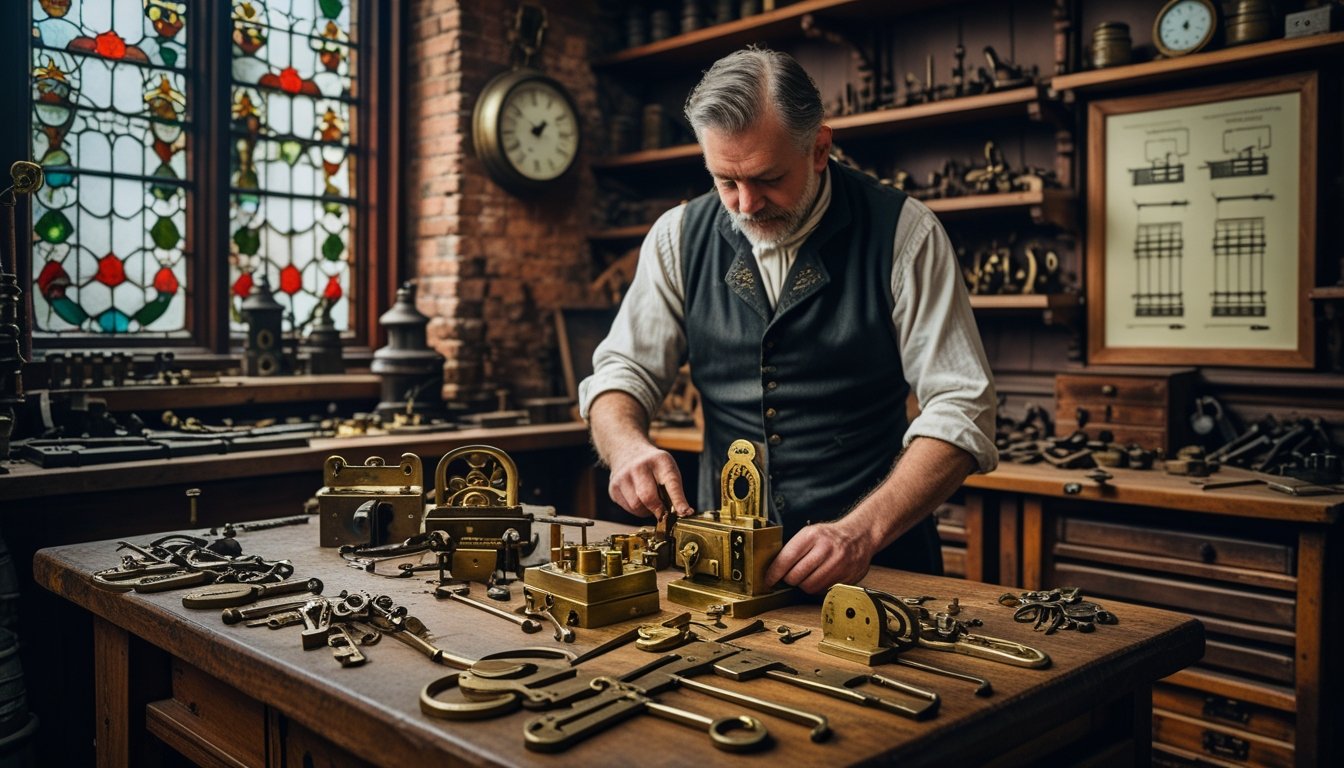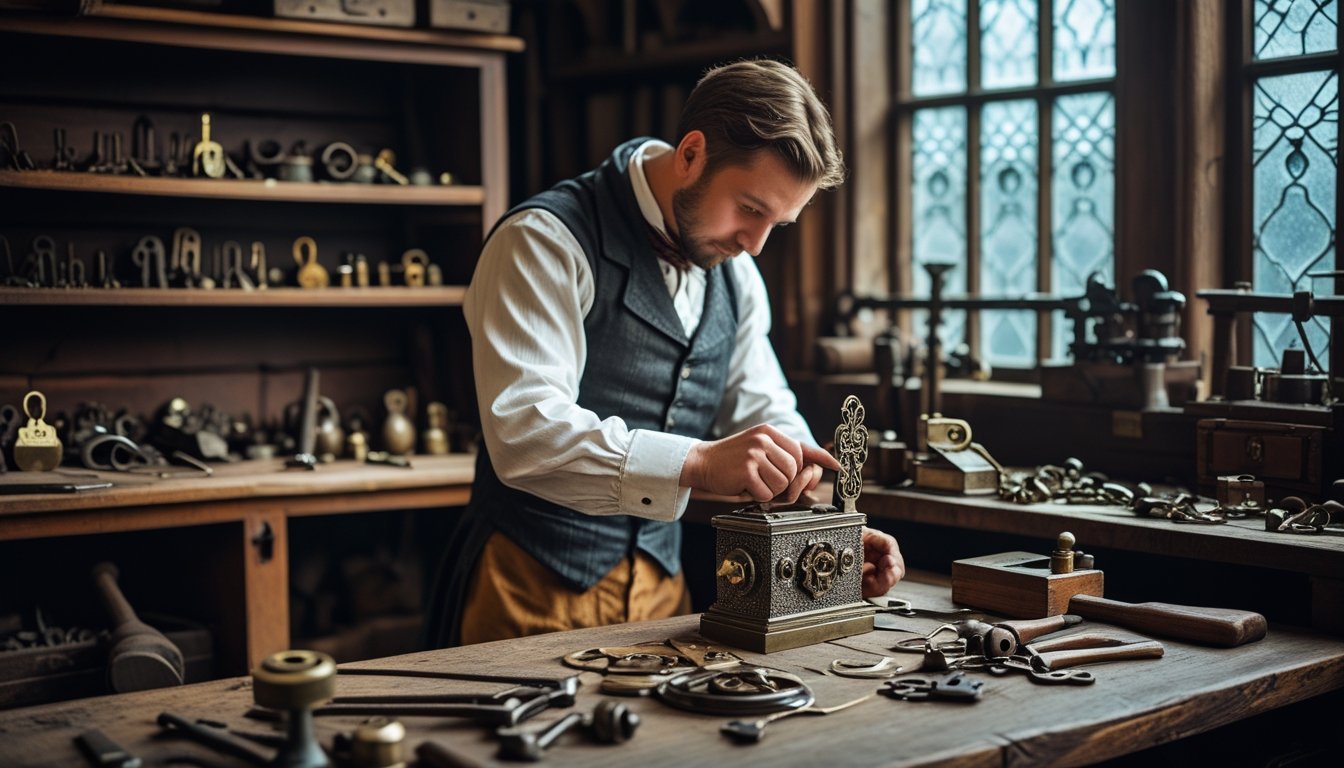Late updated: 07 Nov 2025 12:11
Written by: Elena Prescott
History Of Locksmithing In Victorian England: An Insightful Exploration
The world of locksmithing in Victorian England stands as a testament to the ingenuity and craftsmanship of the era. During this period, locksmithing underwent a significant transformation driven by technological advancements and industrial growth. From the burgeoning town of Willenhall, known as the heart of the British lock industry, locksmiths crafted intricate and reliable security mechanisms, setting new standards in the field.

The Victorian era was a pivotal time that saw industrial advances intertwine with the artistry of locksmithing. As the Industrial Revolution ushered in new manufacturing techniques, locksmiths leveraged these innovations to develop more sophisticated and mass-produced locks. This period marked an evolution from labor-intensive, handcrafted locks to more affordable and efficient designs, which became widely accessible and revolutionised security across the nation.
Key figures in the locksmithing community engaged in notable rivalries, such as that between George Price and William Milner, which spurred further innovation and advancements. As we explore the legacy and impact of locksmithing in Victorian England, we understand its lasting influence on modern security solutions.
Key Takeaways
- Victorian England saw crucial innovations in locksmithing.
- Industrial advancements enabled mass production of more intricate locks.
- Rivalries among locksmiths drove significant advancements in security.
Victorian England: The Pinnacle Of Locksmithing Innovation

During the Victorian era, locksmithing reached unprecedented levels of innovation and craftsmanship. This period witnessed the introduction of new lock mechanisms and designs, the rise of influential inventors, and Wolverhampton's role as a major hub for lock manufacturing.
Emergence Of New Lock Mechanisms And Designs
Victorian England was a hotspot for innovative lock mechanisms. The era saw the introduction of complex designs like the Chubb detector lock, a revolutionary invention that added security by relocking if tampered with. This period also welcomed the evolution of metal locks, transitioning from basic mechanisms to sophisticated, robust designs.
The double-acting tumbler lock, which allowed for enhanced security, became a hallmark of this time. Such innovations not only intensified security measures but also transformed how society perceived safety. Locks evolved into symbols of industrial success and technological progress.
Influential Inventors And Iconic Locks
Visionaries like Joseph Bramah and Jeremiah Chubb established new standards in lock engineering. Bramah's contribution with the safety lock, combined with Chubb's detector lock, set the stage for the era’s ingenuity. Their patents became pivotal milestones in security technology. These innovations were not just theoretical; they were practically employed, offering greater protection to industries and individuals alike.
Meanwhile, George Price and William Milner were notable for their improvements to fire-proof safes, ensuring that both personal and institutional treasures remained protected. Linus Yale, though American, influenced British locks through his pin tumbler lock design, which remains foundational in modern security systems.
Rise Of Local Industries And The Role Of Wolverhampton
Wolverhampton became synonymous with lock production during this period. The town, alongside nearby Willenhall, transformed into a burgeoning centre for metalwork and lock-making. Known for its skilled craftsmen, Wolverhampton produced many of the Victorian era’s iconic locks, contributing significantly to the region’s economic development.
The rise of such local industries was crucial in setting standards for manufacturing and distribution. Wolverhampton's prominence highlighted the importance of regional expertise, emphasising how local developments could influence national trends in security technology.
This confluence of innovative design, brilliant minds, and industrial prowess truly marked Victorian England as a pinnacle in the field of locksmithing.
Technological Advancements And The Lasting Legacy

The Victorian era marked a period of significant innovation in locksmithing, transforming from simple wooden locks to intricate mechanical systems. This evolution paved the way for modern security devices that now incorporate advanced technology like smart locks. Our exploration highlights these key developments and the lasting impact they have had on security.
Evolution From Wooden To Mechanical And Cylinder Locks
During the Victorian era, locksmiths advanced from basic wooden locks to more sophisticated ironmongery. In particular, the development of warded locks evolved, which utilised a series of wards or obstructions to block all but the correct key. This era saw the rise of tumbler locks, which improved security further.
A pivotal advancement was the double-acting pin tumbler lock, introduced by Linus Yale Jr. His invention of the Yale lock in the mid-19th century was revolutionary, with its compact cylinder lock design providing enhanced security. Yale’s improvements laid the groundwork for more advanced systems and established standards in lock mechanisms still prevalent today.
Transition To Modern Security Devices And Smart Locks
As technology evolved, so too did locksmithing, leading to the introduction of early auto locks and more complex commercial security systems. Enhanced by electrical innovation, these devices began incorporating power-operated mechanisms. Master Locksmiths Association played a vital role in maintaining standards as locksmithing became more specialised.
Today, smart locks exemplify the intersection of craftsmanship and digital advancement. Modern locksmiths employ technologies like biometrics and Wi-Fi connectivity, allowing remote monitoring and access. Forensic locksmiths now also utilise these developments to examine lock integrity and security breaches, expanding the field's scope and reinforcing its importance in our ever-advancing world.
Frequently Asked Questions

In Victorian England, locksmithing underwent significant developments, from technological innovations in lock mechanisms to profound shifts in the profession. The influence of the Industrial Revolution and the changing societal needs shaped the locksmithing landscape of the era.
What advancements were made in the design and technology of locks during the Victorian era?
Victorian times witnessed major improvements in lock design and technology. The era saw the creation of more secure and complex locking systems, such as the Yale lock. Patented in 1843, the Chubb detector lock became renowned for its security features, helping to revolutionise the industry.
How did the role and status of locksmiths evolve in England throughout the 19th century?
Locksmiths gained a much-deserved status boost in the 19th century. No longer just artisans, they became essential players in security innovation. This era saw locksmiths recognised not only for their craft but also for their innovative approaches to security solutions, especially in urban areas.
In what ways did the Industrial Revolution impact the locksmithing profession?
The Industrial Revolution profoundly altered locksmithing. Mass production techniques allowed for wider distribution of locks, making them more accessible. Locksmiths were now able to produce and perfect intricate designs at scale, enhancing the reliability and availability of security solutions.
What were the common security challenges faced by Victorian households and businesses, and how did locksmiths address them?
Security challenges were rife during this period, with burglars becoming more adept. Locksmiths responded by creating more robust locking mechanisms and improving the strength of safes. The design of locks became increasingly sophisticated to withstand common methods of tampering.
Can you describe the most influential locksmiths of Victorian England and their contributions to the field?
George Price and William Milner were notable figures during this era. Known for their rivalry, they both contributed significantly to the development of secure safes. Their patented innovations played a critical role in advancing the field of fire-proof and secure storage solutions.
What types of locking mechanisms and security devices were prevalent in Victorian England?
Victorian England featured a variety of locking mechanisms, from lever tumbler locks to the innovative chubbs and yale systems. Combination locks and intricate bolt mechanisms were also in use, addressing the growing demand for security both in households and in commercial settings.
